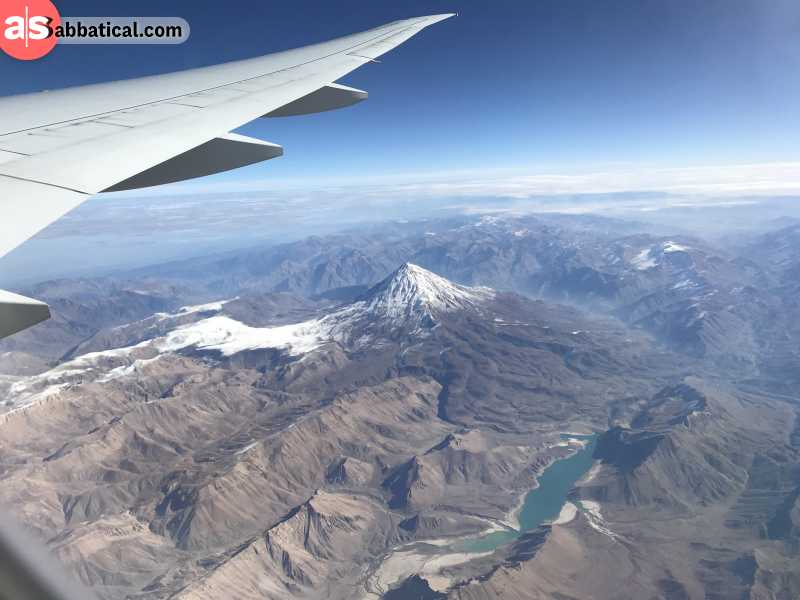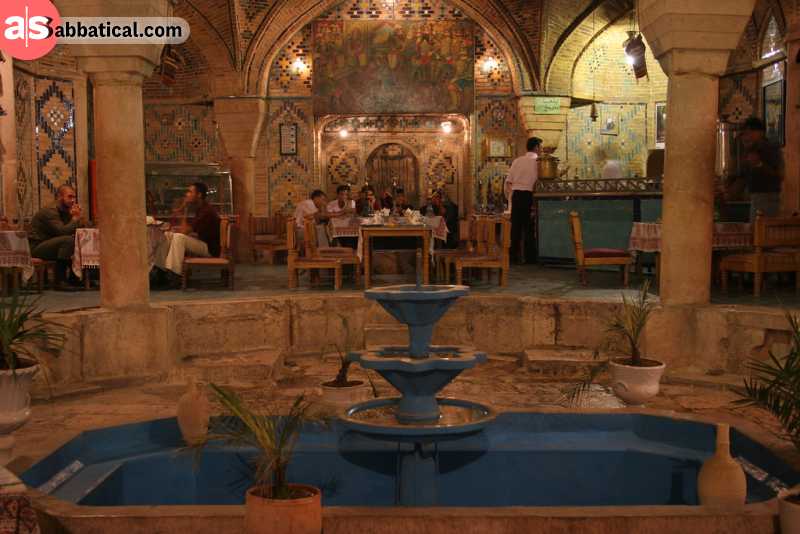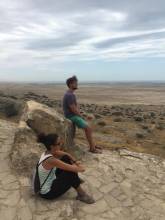Where is Iran On the Map?
If you plan to visit Iran , you should know where is Iran both geographically and ideologically. Many facts about the culture of Iran get to Western tourists only from a historical perspective. Iran is the place you want to visit to discover Persian architecture and arts. It is a place full of history and beautiful traditions, home for one of the oldest civilizations in the world. But Iran is also a strict Islamic Republic, so knowing the basic rules before traveling to Iran is a must.
, you should know where is Iran both geographically and ideologically. Many facts about the culture of Iran get to Western tourists only from a historical perspective. Iran is the place you want to visit to discover Persian architecture and arts. It is a place full of history and beautiful traditions, home for one of the oldest civilizations in the world. But Iran is also a strict Islamic Republic, so knowing the basic rules before traveling to Iran is a must.
The first thing you need to do is getting a visa. That can be difficult if you are from a country with no diplomatic relations with Iran. Most airlines request you to have a visa before boarding. After this step, you are free to experience a Persian adventure.
The rules for tourists are less strict than the ones for locals and tourism is encouraged. Local guides and travel agencies can arrange tours and trips around the country. You can travel on your own if you come from the European Union or other eligible countries. Locals are traditional and welcoming, inviting you for tea or lunch. If you have the opportunity to get to know them, you'll see their way of life.

It's easy to find where is Iran located on the world map. After all, Iran is one of the top 20 largest countries in the world. It is situated in the Middle East , between the Gulf of Oman
, between the Gulf of Oman , the Persian Gulf, and the Caspian Sea. If you look where Iran is, you'll see that this vast country has mountains, deserts, forests, and fertile coastal plains. It is a rich country in landscape and culture. It is also a fascinating country, where the legends of the Persian Empire are still alive.
, the Persian Gulf, and the Caspian Sea. If you look where Iran is, you'll see that this vast country has mountains, deserts, forests, and fertile coastal plains. It is a rich country in landscape and culture. It is also a fascinating country, where the legends of the Persian Empire are still alive.
Iran is a multi-ethnic country. Here live Iranians, Iranian Azeris, Kurds, Armenians, Turkmens, Georgians, Assyrians, Jews, and Arabs. Iran also has many religious minorities, along with the dominant religion, Shia Islam. Sunni Islam, Judaism, Christianity, and Zoroastrianism are the most notable. With such a diverse ethnic population and influences, Iran still holds the atmosphere of a vast empire.
If you want to learn more about the countries in this region, make sure to check out our Turkey, Armenia, Georgia and Azerbaijan guides!
Best Time to Visit Iran

Because it is such a large country, the best time to visit Iran is determined by your plans. Generally speaking, spring and autumn are the best periods for traveling in Iran. Avoid the hot summer months in Iran, even if you are used to travel in the summer. During summer, the temperatures can go up to 40 ºC, and this can get uncomfortable, especially when you are not allowed to wear short skirts or trousers and short sleeve shirts. Besides, women have to cover their hair with scarfs.
Winter in Iran is freezing, but this is not a reason to avoid it. If you are a ski fan, you should know that Iran has 19 ski resorts and excellent ski touring routes.
Check out the best ski resorts in Iran here!
Iran has more than 100 peaks over 4,000 meters and excellent snow from January to March. Persian powder is also great for snowboarding, climbing, mountain bikes, and hiking.
Experience the Festivals in Iran

Your journey to Iran should also be about culture and traditions. After all, the land of Alexander the Great has many stories to tell. One of the best ways to get to know Iran and its people is to take part in festivals and public celebrations.
Here is a list of Iranian festivals to help you plan your journey:
Nowruz Festival
Nowruz means "New Day" and represents the Iranian New Year. It is celebrated for more than 3,000 years in Iran, but also in Central Asia , Caucasus region, Western Asia
, Caucasus region, Western Asia , and Black Sea Basin. Nowruz marks the beginning of spring, and it's celebrated on 21st of March (or around this date, depending on the vernal equinox).
, and Black Sea Basin. Nowruz marks the beginning of spring, and it's celebrated on 21st of March (or around this date, depending on the vernal equinox).
Since 2010, Nowruz is registered on UNESCO List of Intangible Cultural Heritage of Humanity. Traditionally, Iranians visit their family and friends on this occasion. They wait for the exact moment of the vernal equinox and then exchange gifts. The visits continue for 13 days. The 13th day of the festival is called Sizdah Bedar, and it is spent outdoors, at the picnic, with music and dance.
Chaharshanbe Suri
It is the last Wednesday before Nowruz. People jump over fires at sunset, as a form of purification. They also wear costumes and go from door to door, making noise with spoons and plates, and receiving sweets.
Tirgan
This is a summer festival, held at the beginning of July. It is dedicated to archangel Tishtrya who generated thunders and lighting to get rain. Tirgan is a water festival where you can splash people with water, dance, recite poetry, and eat traditional summer foods.
Mehregan
Also known as the Persian Festival of Autumn, Mehregan is dedicated to Zoroastrian yazata Mithra, responsible for love, affection, and friendship. Mehregan is celebrated in the 196th day of the year. It is a time to give thanks for the harvest and pray for blessing. It is also a time for traditional foods and drinks, fireworks, and feasts.
Sadeh
Celebrated 50 days before Nowruz, Sadeh is a winter festival. It honors the fire and its power against cold. Boys collect wood going from door to door, and then set great fires. The fires are kept all night. Today, most of the fires are made inside and accompanied by music, dance, and feasts.
How to Get Around Iran

If you come from a country that has diplomatic problems with Iran, like the United States or the United Kingdom, you probably won't be allowed to travel around Iran by yourself. Book a guided tour, contact a travel agency, and see what possibilities you have.
Iran has many airports (around 70) where you can land using international or regional flights. You can also come to Iran by train, from some of the neighboring countries (Pakistan or Azerbaijan
or Azerbaijan ). Check before choosing trains as a significant conveyance, because schedule may change due to different temporary problems. There are daily buses from neighboring countries as well. Routes from Turkey
). Check before choosing trains as a significant conveyance, because schedule may change due to different temporary problems. There are daily buses from neighboring countries as well. Routes from Turkey , Iraq
, Iraq , Afghanistan
, Afghanistan , and Turkmenistan
, and Turkmenistan are considered safe.
are considered safe.
Because Iran is a vast country, choose to travel by plane if you are in a hurry. Traveling by plane is reliable, flights are frequent, and prices are affordable. But if you really want to discover beautiful Iran, get around by bus, by train or by car. Buses are cheap, but not so fast. Tickets are available online, at bus terminals, and ticket offices. Trains are faster, even less expensive, and more reliable than buses.
As in other countries with meager fuel costs, traveling by taxi between cities is a common thing in Iran. You can get a shared or a private taxi, but if you want privacy, you'll have to pay for all the empty places. Be sure you negotiate the rate before your trip.
Getting around by your car is an accessible traveling mode in Iran. A rich network of roads and the low fuel price encourage tourists to go everywhere and see everything. Pay attention to special taxes for tourists and be patient in traffic. One of the peculiar facts about Iran is that you are not allowed to have pets in your car.
What to Do in Iran

Find out where is Iran because there are so many things to do in Iran.
What to Do in Tehran

Starting with Tehran, the capital of Iran, at the lower slopes of the Alborz Mountains, your journey will be a pleasant experience. Tehran is a large metropolis, with crowded streets, concrete buildings, and a good dose of pollution. It is also home for palaces, museums, bazaars, Persian art, and cultural events.
Here is a short list of places to see in Tehran:
Golestan Palace

This is a complex of buildings, the formal Qajar royal complex. Built in the XVIth century, Golestan Palace is a UNESCO World Heritage Site.
You can admire the Persian architecture and the beautifully decorated tiles of 17 structures: palaces, halls, museums, gardens. Maybe the most impressive is the Diamond Hall (Talar e Almas), with its mirror work. Take time to visit the Gift Museum too. In addition to gifts received by the royalties, the museum exhibits rare objects which belonged to kings.
Carpet Museum of Iran

Here you can admire the fantastic work of Persian artists. The museum exhibits work from the 16th century to the present.
Sa'dabad Complex

Created by Qajar and Pahlavi monarchs, this complex has 300 ha. Natural forests, palaces, gardens, galleries, and museums are waiting for you. Once the home of the monarchs, Sa'dabad Complex is today a public museum and a space for beauty.
Azadi Tower

One of the landmarks of the city, Azadi Tower is both an observation deck and a museum.
Historical Sites in Iran

Iran also has many ancient cities, where you can emerge in history and legends. Persepolis, Yazd, Fahraj, Pasargad, Sialk Mound, Susa, are just some of them. They all have something which must be seen.
Take, for example, Isfahan and its Shah Mosque. The mosque is a masterpiece of Persian architecture, featuring seven-color mosaic tiles and calligraphic inscriptions. Built in the 17th century, Shah Mosque can be admired even on Iranian banknotes. The mosque is part of a more massive complex, called Naqsh-e Jahan Square. Surrounded by palaces and mosques, the square is a UNESCO World Heritage Site.
Other Activities in Iran

But Iran is not only about ancient places and history. It is a fantastic destination for desert trekking, safari, camel riding, winter sports, and countryside trips. The best hiking trails go through the Tâlysh Mountains, the Alborz mountains, and, of course, Damâvand. Named "the roof of Iran", Mount Damâvand has 5, 671 meters and you may want to visit it in the summer.
What to Eat in Iran

You cannot say you know where is Iran if you didn't taste Iranian food. Presenting as a mix of Caucasian, Turkish, Greek, Central Asian, and Russian cuisines, Iranian cuisine is flavored and spicy. Cinnamon, turmeric, saffron, and parsley are often used.
In Iranian dishes, you can also frequently find fruits, fresh or dried. The taste of Iranian cuisine traveled around the world. Today, you can try their specialties on any continent, but the true spirit of Iranian food can be found only in Iran.
Here are some dishes you should give a try while traveling in Iran:
Rice

The history of cooking rice began in the 16th century. It is used even more than wheat, so there are endless dishes featuring rice.
Here are some of them:
Baghali Polo

Zereshk Polo Morgh

Shole Zard

Bread

Many types of flatbread are used in Iranian cuisine.
Among them are:
Lavash

Sangak

Qandi bread

Komaj

Tannour Bread

Stews and Soups of Iran
You should taste the many different stews and soups while you visit Iran. These food types are rich with different flavors, which make them quite a great food experience!
Most notable of them are:
Kashke Bademjan

Khoresh Gheymeh

Ash Reshteh

Abgoosht

Desserts of Iran
Last but not least, Iranian desserts are phenomenal. Try them out to complete the remarkable food experience of Iran. Here is just a glimpse of them:
Faloodeh

Gaz Candy
 Gaz Candy is a famous Iranian dessert made with nougat.
Gaz Candy is a famous Iranian dessert made with nougat.

Drinks of Iran
After getting through the amazing food experience of Iran, don't forget to spice it all up with some of the refreshing drinks! Iran is famous for its tea and cold beverages.
Juice shops are everywhere in Iranian cities. They sell a cold drink called Sharbat, made from flower petals or fruits. You should also try Araqs, made from herbs, and of course, tea. Tea houses are also famous in Iranian towns. Especially during summer, when it gets scorching, cold drinks are a must. One of the oldest beverages around is Sekanjabin, a cold drink made of honey and vinegar.
Now you know where is Iran and what makes it such a beautiful place to visit!

It's easy to find where is Iran, but sometimes is not as easy to get there. Nevertheless, a journey to Iran is a different experience both for Western and Eastern tourists. Iran offers a unique combination of Persian art, history, spices, and Islamic traditions.
Pay attention to rules and be respectful. After all, every country has its rules, and it's not a tourist's job to judge them.
You will not regret diving into the diverse and ancient culture of Iran and the Persian Empire.


















